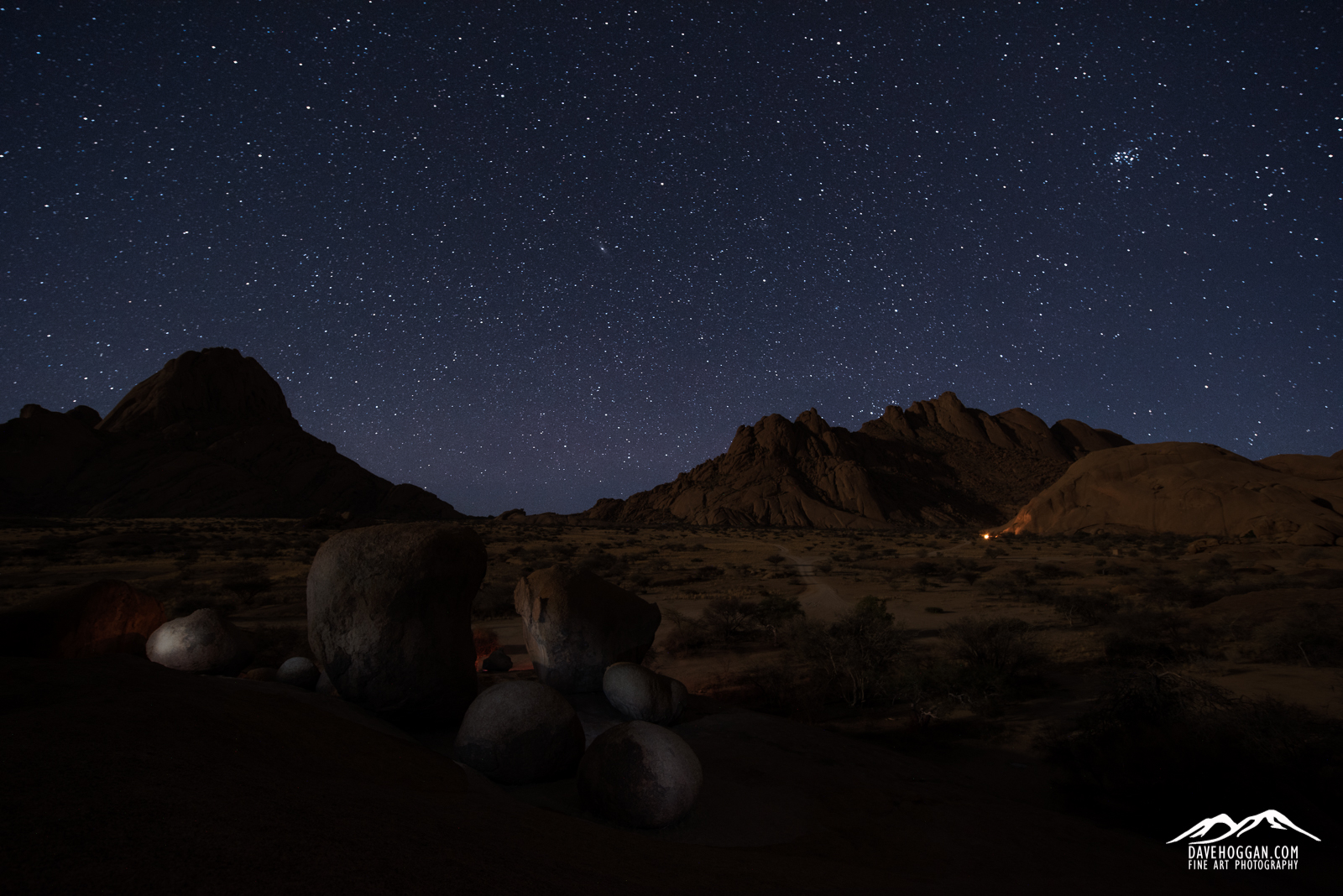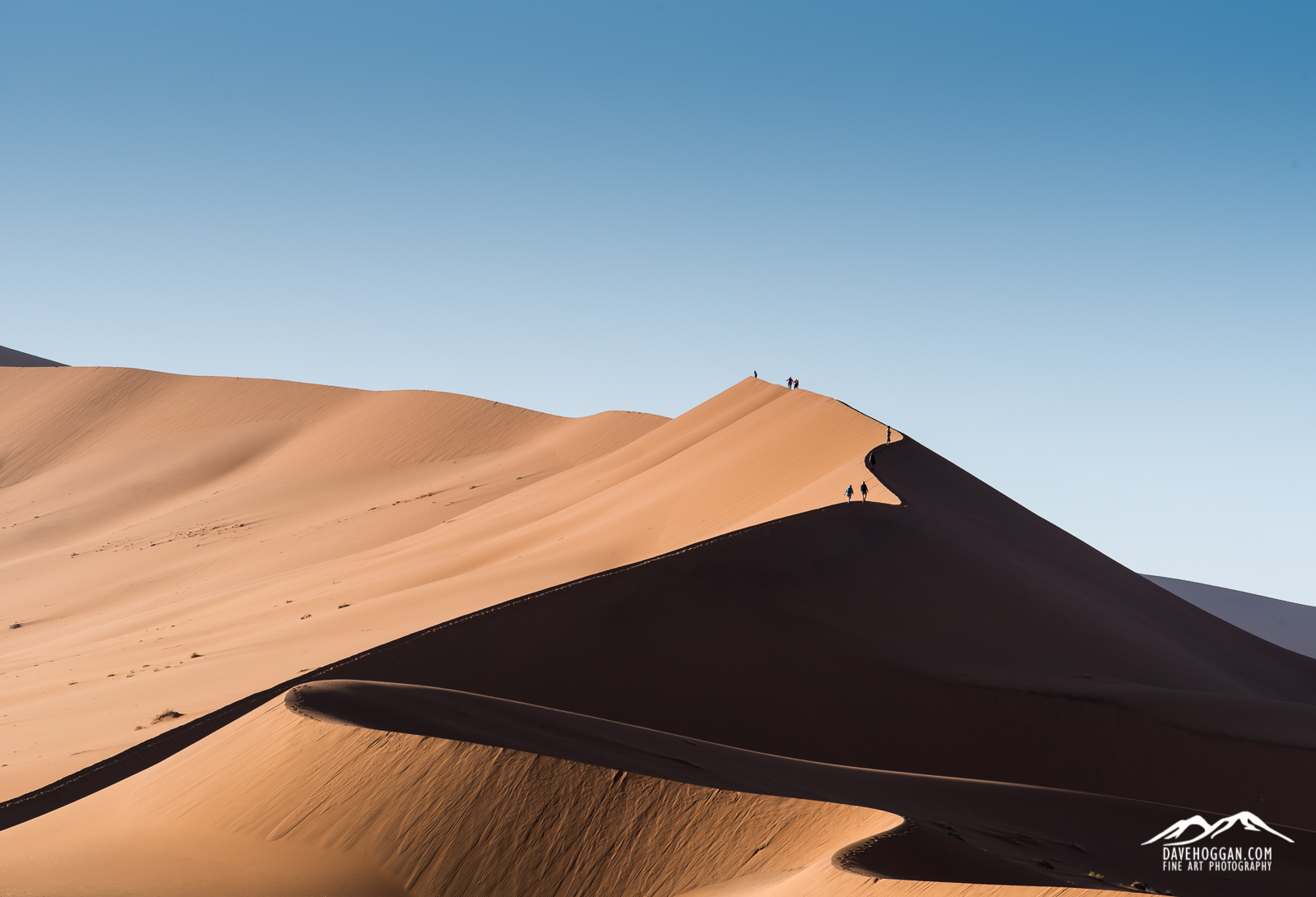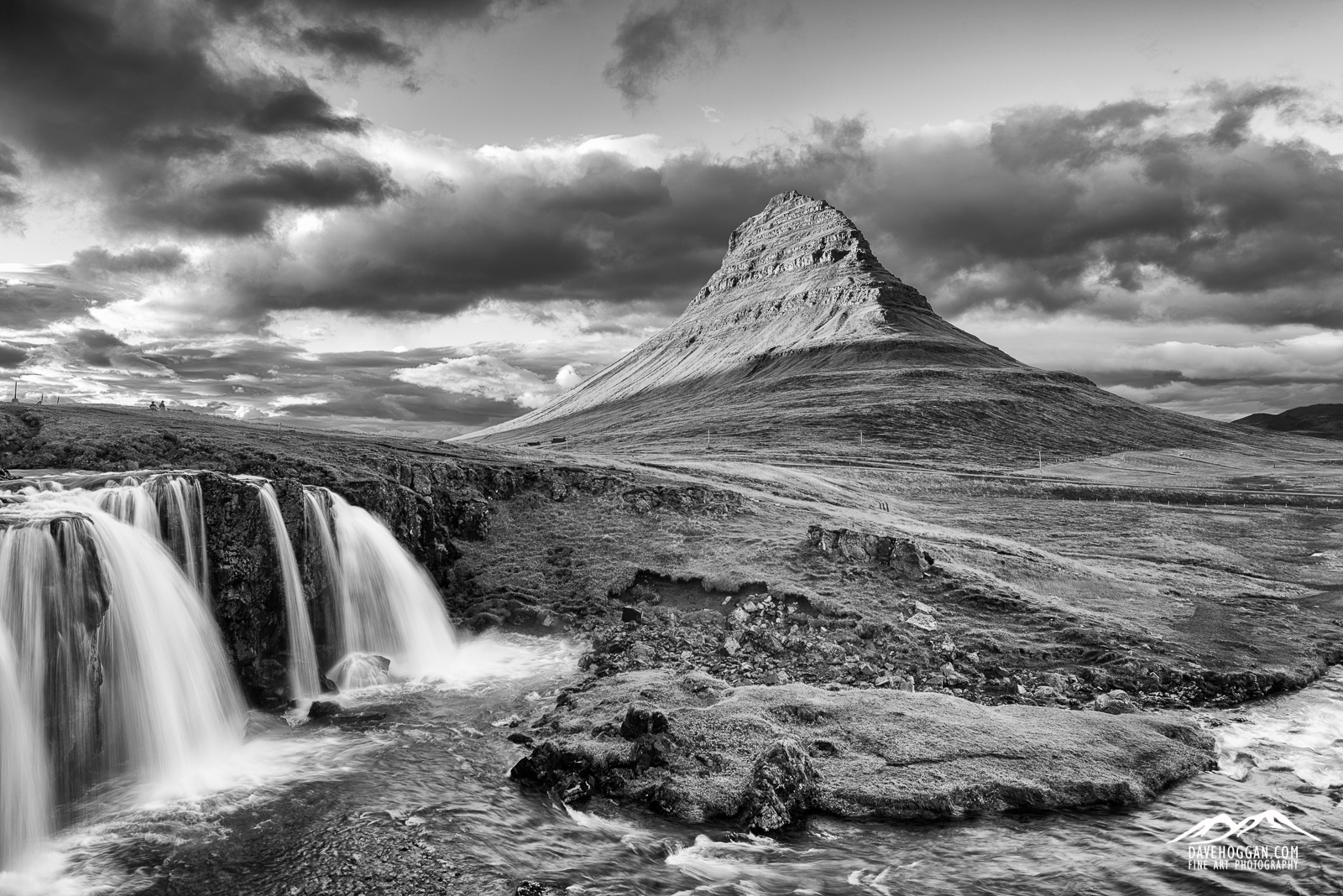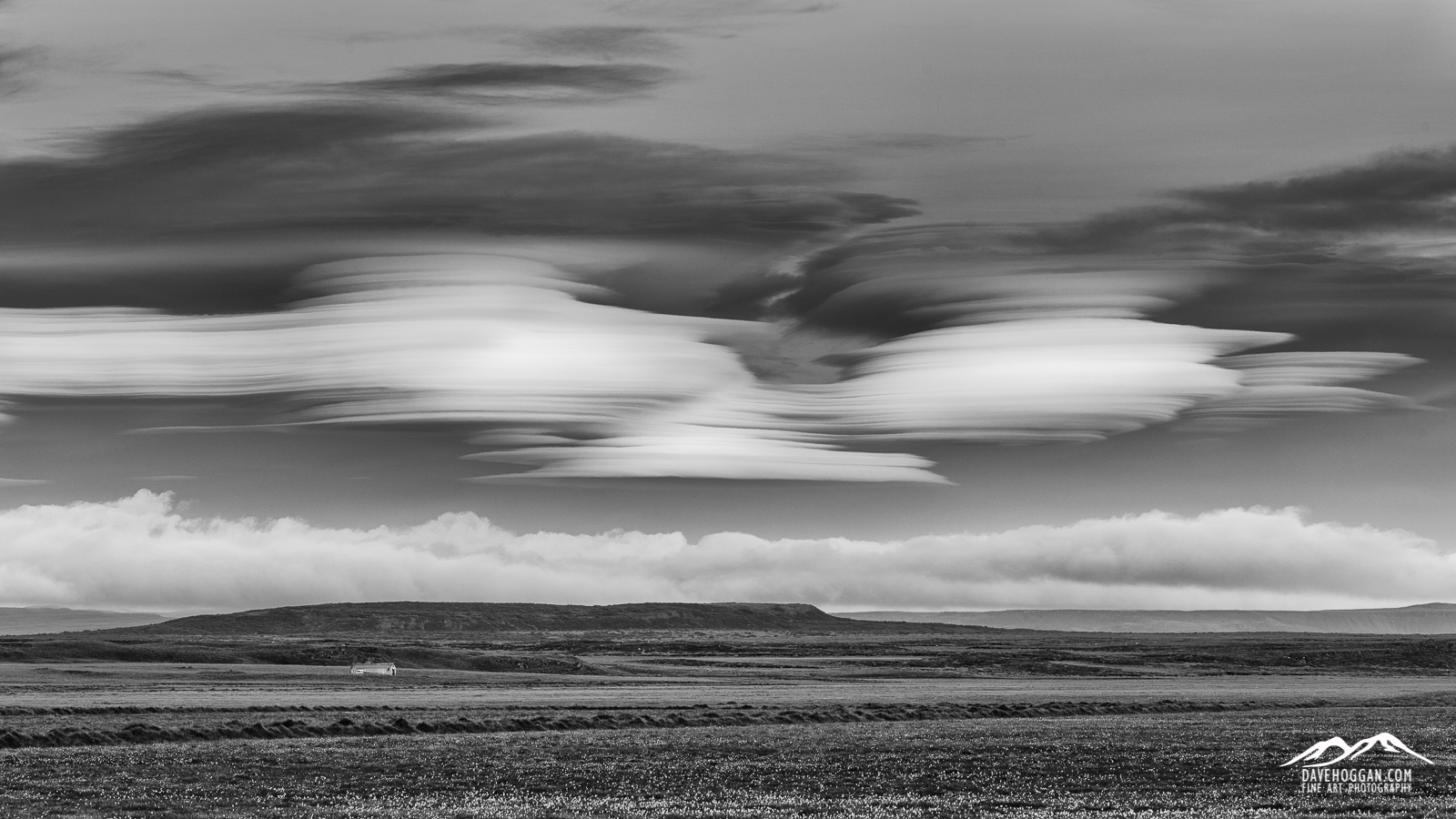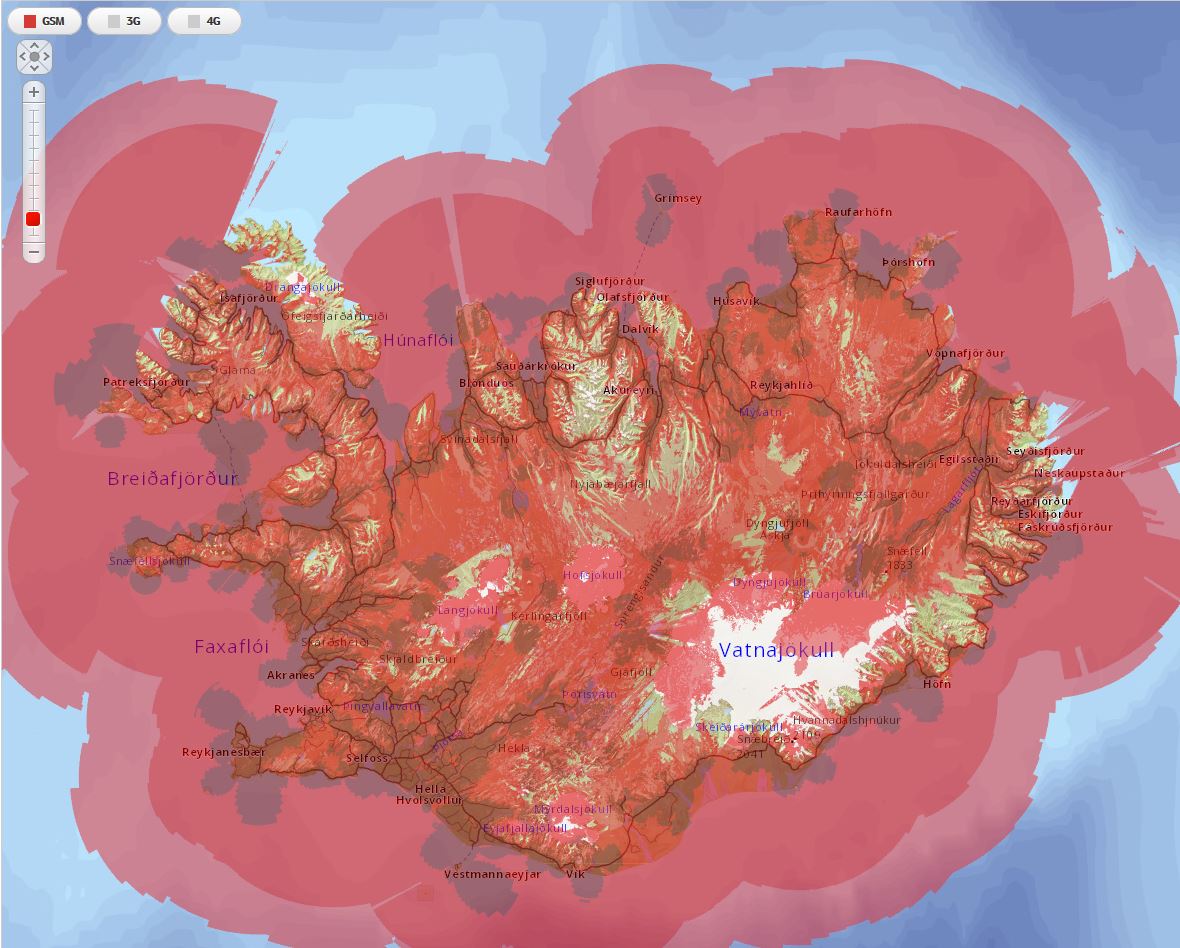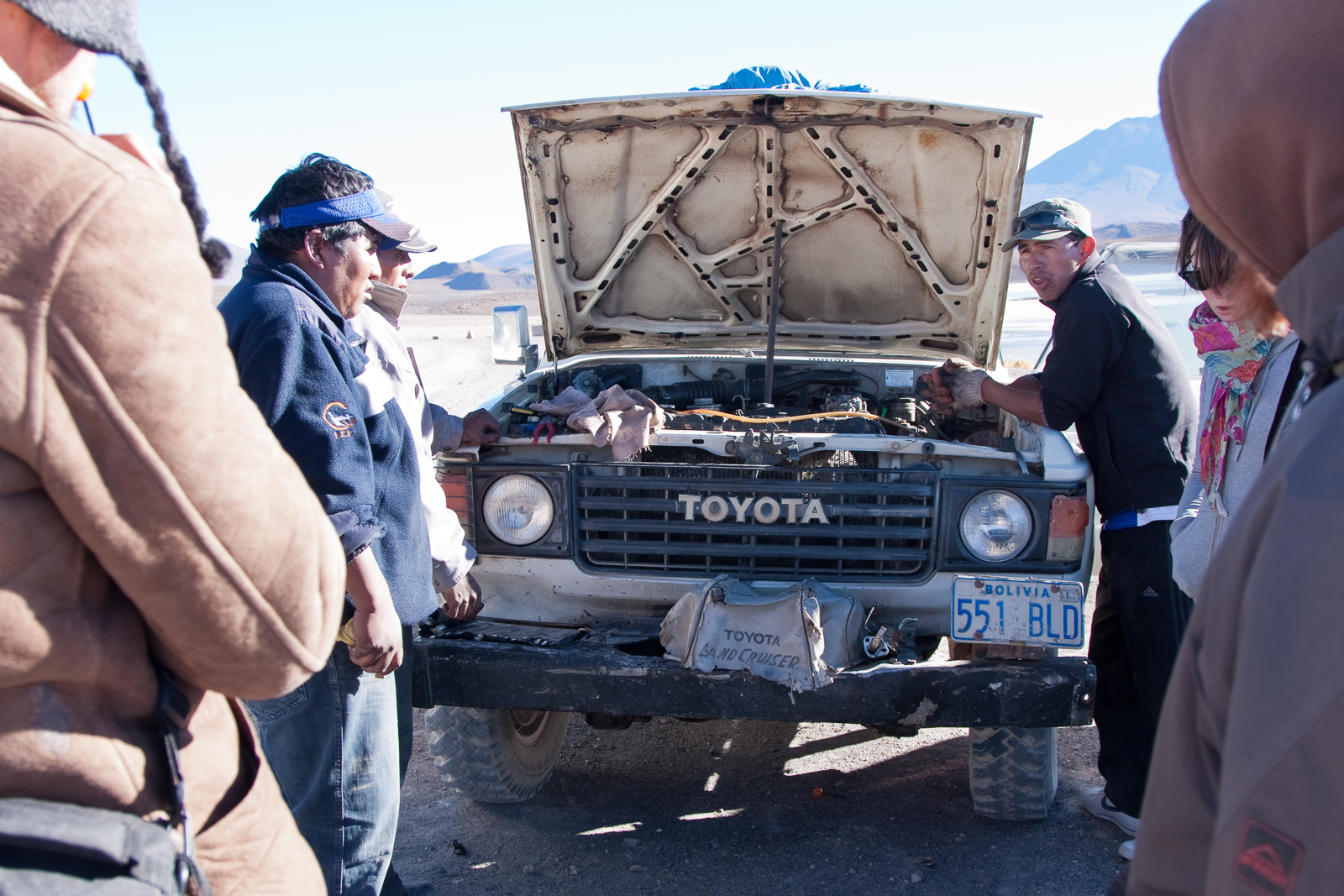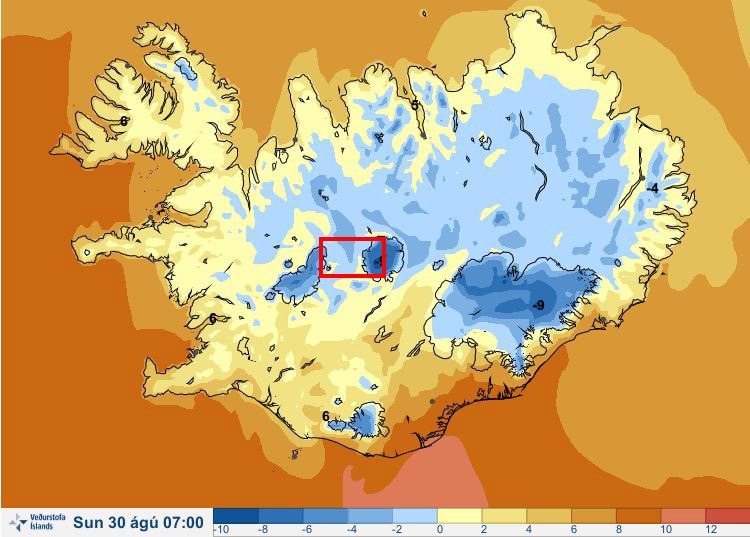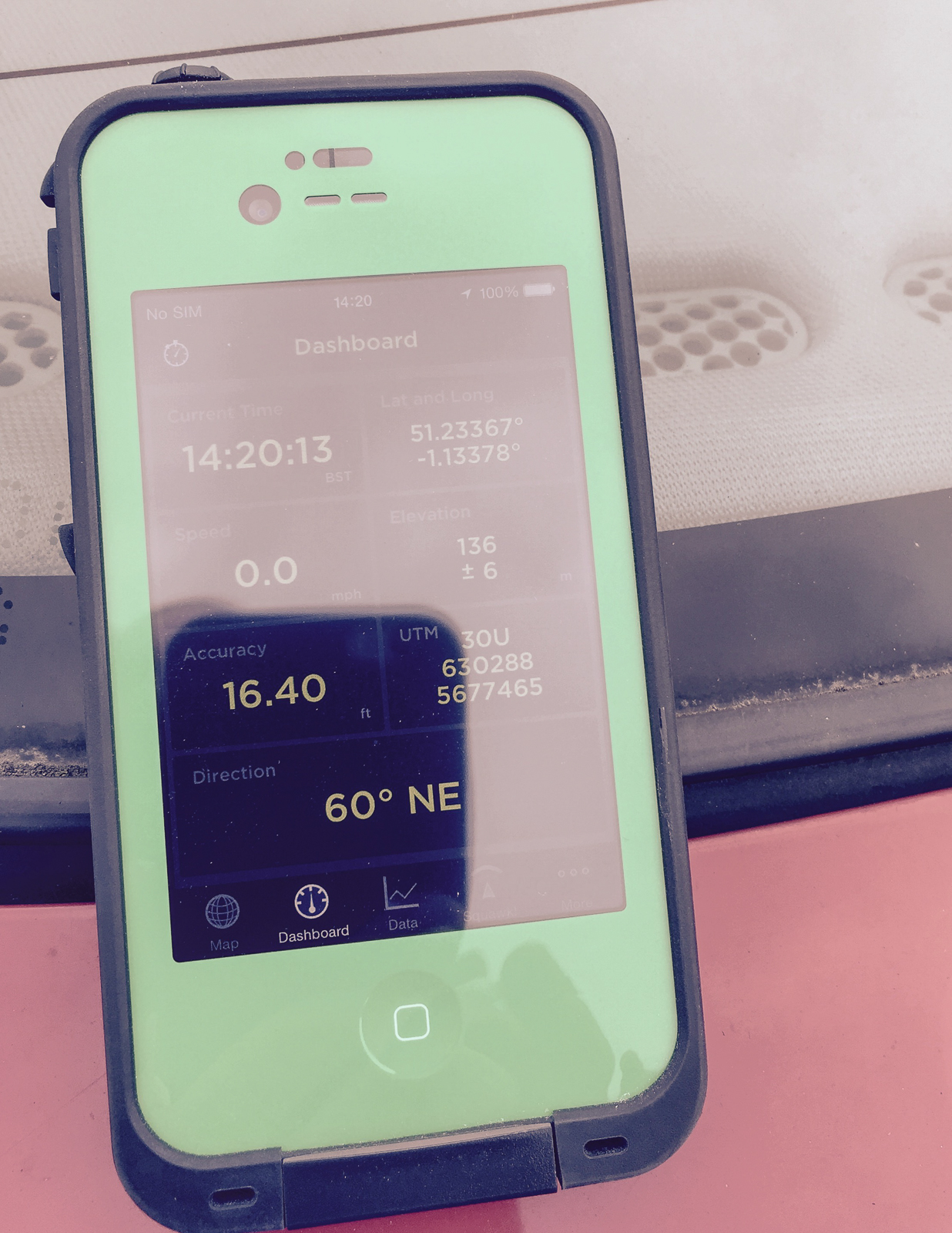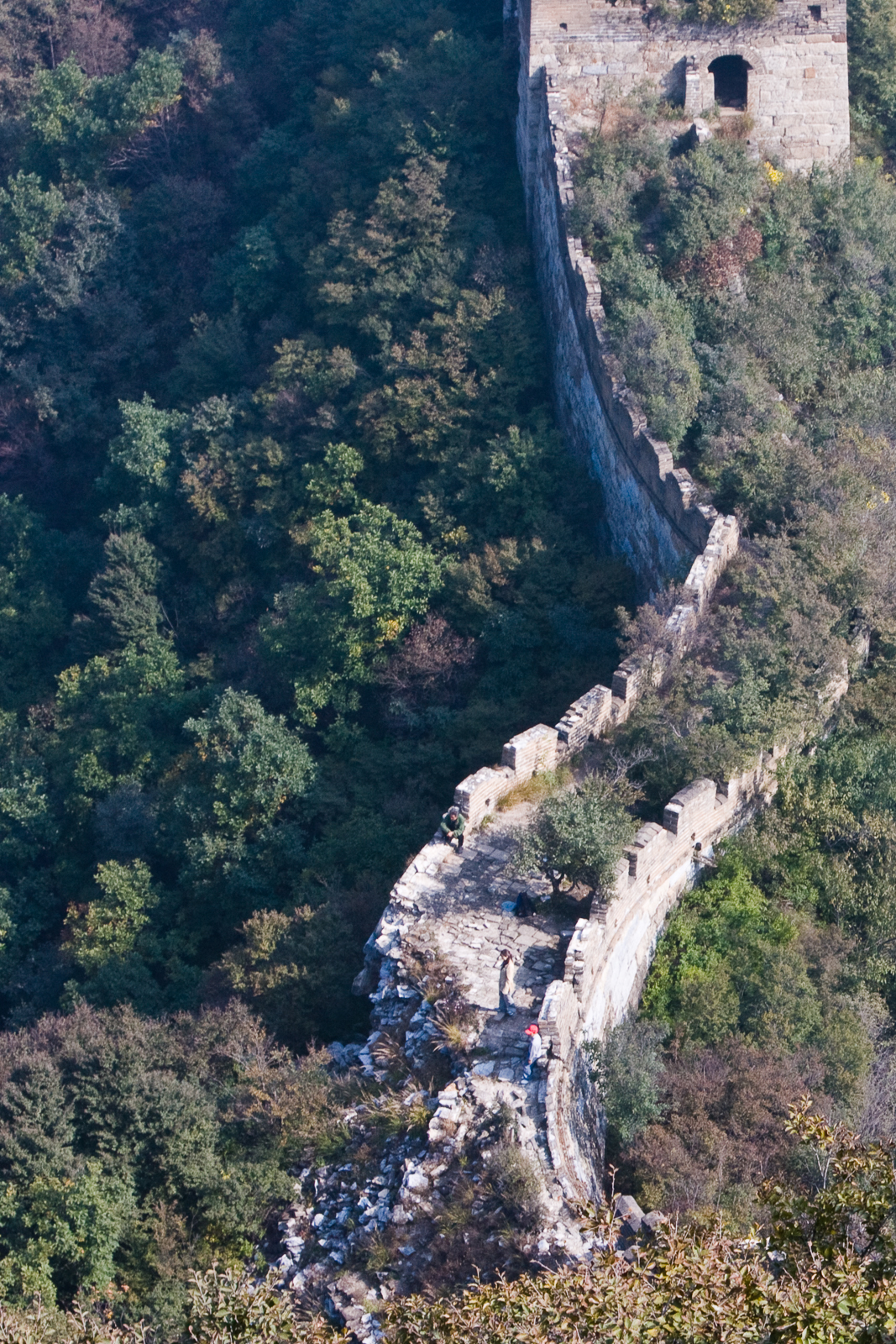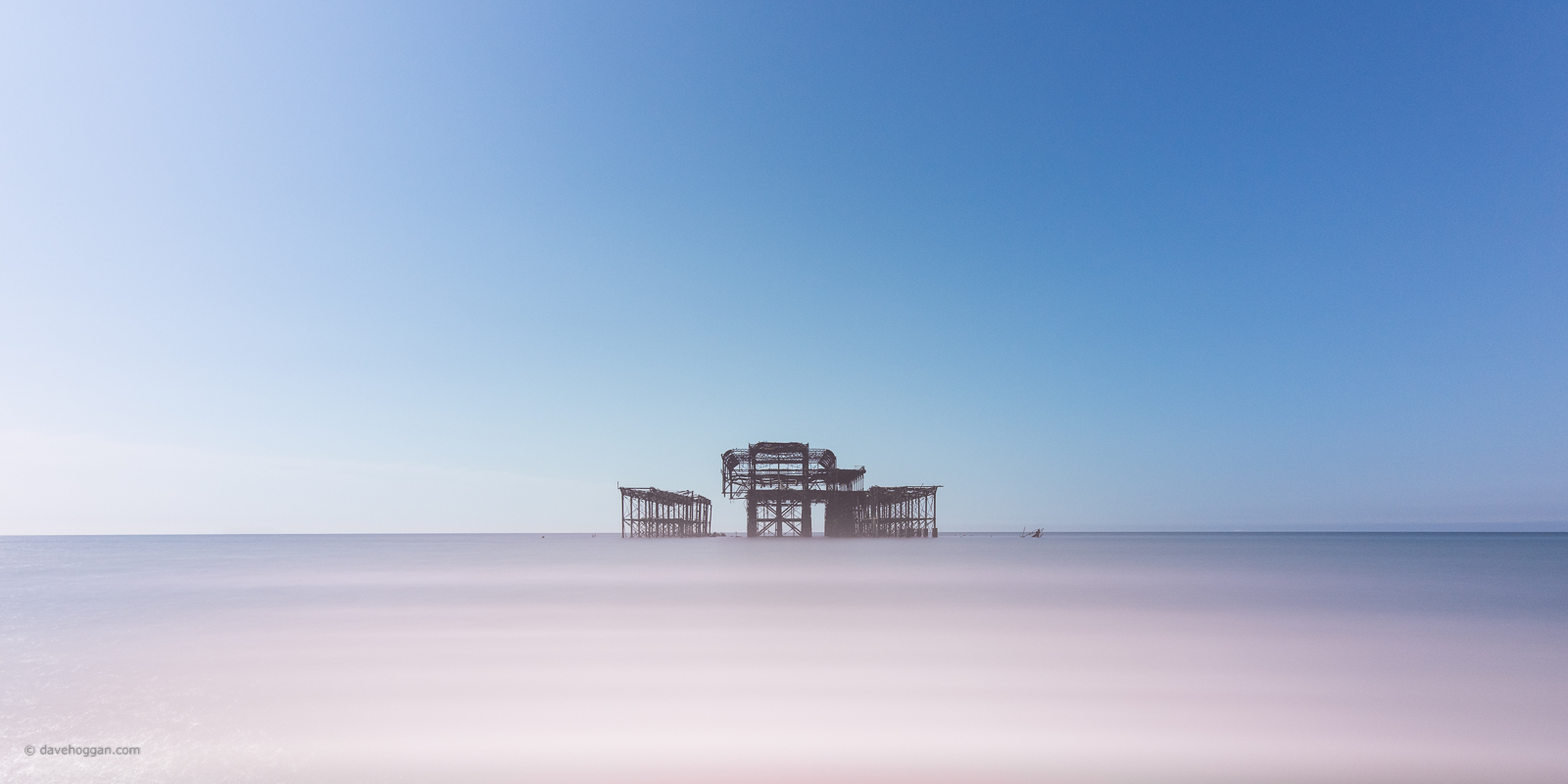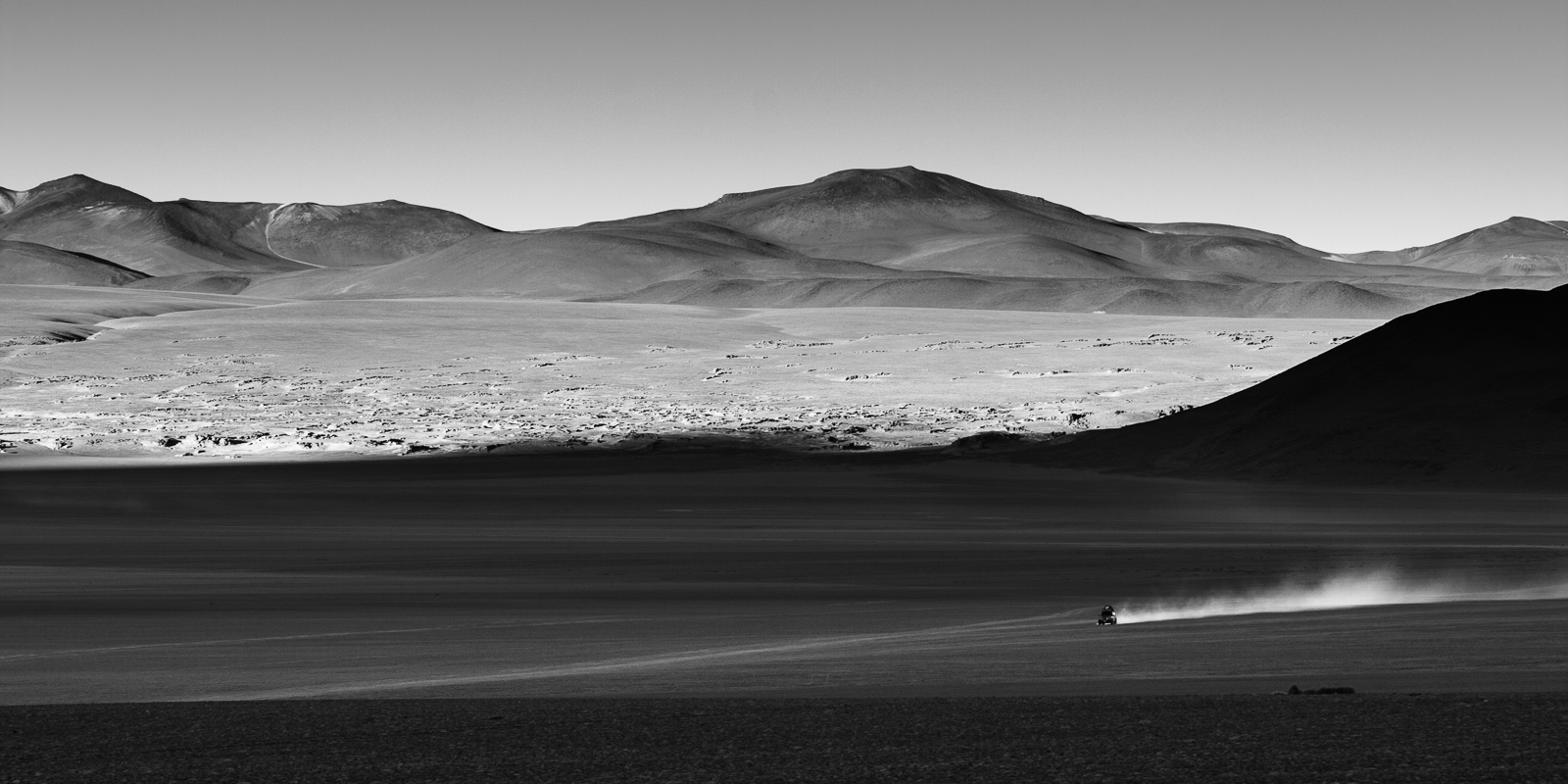Way back when I was first interested in the Nature’s Light trip to Namibia I was admittedly a little sceptical about spending two full days at the rocky Spitzkoppe. I even emailed them to query why, given the other stunning locations in Namibia, we were spending so much time there. “It’s always popular with those who have been. Don’t worry, you’ll see.” was the reply. Sceptical I remained.
Time passed and a few months later and I found myself at Spitzkoppe and have to admit that my concerns were unfounded. Despite my dubbing it “The Rock” once I saw beyond the immensity of the mountain itself, it was the little details that really stood out.
This is the final shot taken on the trip. We had just finished shooting some timelapses and panoramas at a rock arch (behind me in this shot) and were relaxing with a beer (or perhaps two). Looking out over the plain to Gross Spitzkoppe (left) and the Pontok range (right), we could see the glow of camp fires casting their glow on the rock faces. The canopy of stars, like everywhere else in Namibia, was incredible.
